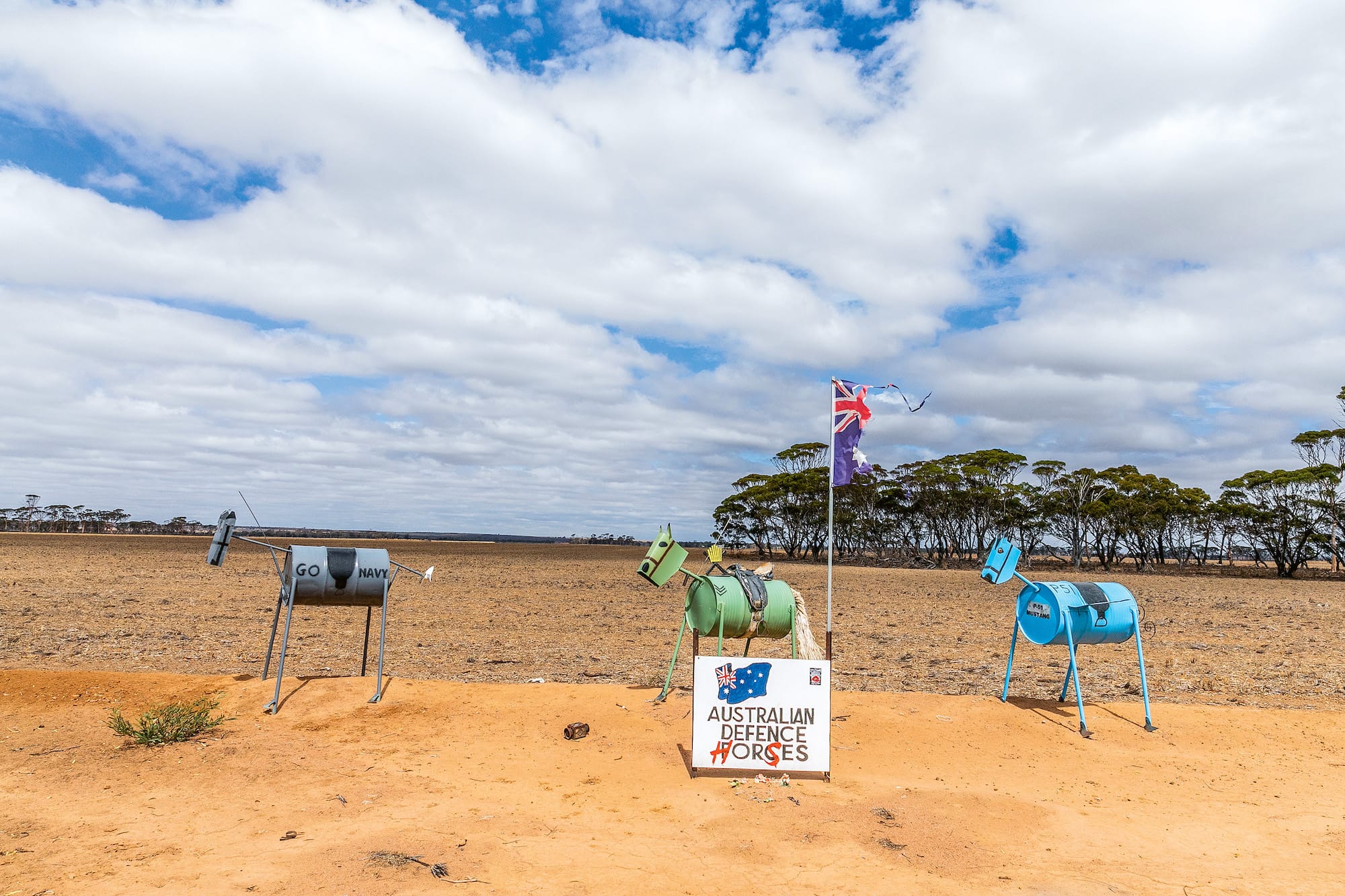
The annual Kulin Bush Races attracts punters, partygoers and a herd of horses let loose on the Tin Horse Highway.
Words Isabella Davis
Photography Nic Duncan
RED dust doesn’t get a chance to settle at the feet of almost 4000 spectators at the Kulin Bush Races, where a sea of cowboy hats, flannel shirts and scuffed Blundstones engulfs the racetrack railing.
Most have travelled to Kulin, 300 kilometres east of Perth, to bet on local farmers jockeying their horses. But the races aren’t the only competition keeping onlookers on the edge of their seats this weekend. Some come for the sheep racing, or the sheepdog demos, or the kids’ hobby-horse races. Some are here to party alongside eccentric country singers.
I’ve come for the tin horses.
Welders, sculptors and metal workers from across Western Australia have spent months tinkering and welding, building life-size entrants to the Tin Horse Competition. Each year, the winning horse joins more than 70 fantastical, comical, ridiculous horses positioned along Kulin’s famed Tin Horse Highway.
To get here, racegoers have followed the 15-kilometre highway past the colossal bottle of “tomato horse”, the pilot horse flying a plane, and the lovey-dovey horses dancing beside a jukebox. They drove by the horse in a police car signalling drivers to pull over. Past the hockey-playing horse, the postie horse, the bagpipe-playing horse.
In 1996, in the second year of the Kulin Bush Races, a local farmer constructed a horse out of tin and placed it in his paddock at the turn-off to the racetrack. “It was laying back in a real Lady Godiva-type pose,” recalls Wendy Gangell, the coordinator of the Tin Horse Competition. “It was like a shock horror and just such a talking point.”
Other farmers with neighbouring paddocks joined in and tin horses started popping up all over the highway. “It’s just country thinking,” Gangell says. “It became a bit of a town rivalry. People think, ‘I want to make one of those, too’ or ‘I can do better than that.’ It grew very quickly in the first couple of years.”
Within three years, there were too many tin horses for the town to manage. “They all need maintenance,” says Gangell. “And sometimes they were put in places where it really wasn’t appropriate for our farmers because of the gateways for stock and vehicle movement.” The annual competition was established as a way to manage the surge of tin horses.
Kulin has introduced an Adopt a Horse program to help maintain the tin horses. “You get a certificate with its name and its photo and its story,” says Gangell, “and it becomes your responsibility to go out and maintain it.” About three-quarters of the tin horses on the highway have been adopted.
Entries in the Tin Horse Competition are received from all over Western Australia, including high schools that have incorporated tin horses in their materials design and technology classes. “We have just about exhausted everyone in the Kulin district that can weld or has some tin,” Gangell says.
Highlights in last year’s competition were two Olympic breakdancing horses (Neigh-Gun and Hay-Gun), and an ocean scene called Surf’s Up at Kulin-Up. The crowd cheered and whooped as Gangell announced the surfing horses as the winning entry, featuring a huge tin wave barrelling over a surfboard-riding horse, as another horse prepares to drop in behind. Alongside the horses is a dog riding a boogie board. A shark fin lurks nearby.
The surf scene was created by Murray Rynvis of Busselton, a coastal town three hours’ drive south of Perth. “It took me three months,” he says. “I run a small engineering shop and steel supply business, so occasionally when the boys and I hadn’t much to do, we just did a little bit on it, and I’d do few hours after work on it myself.”
The tin horses caught his eye when he visited the Kulin Bush Races two years ago. “I just thought, I could do one of these,” he says. Though, he adds, “It’s very hard to make a horse look like a human surfer.”
The next Kulin Bush Races will be held on 3–5 October 2025.